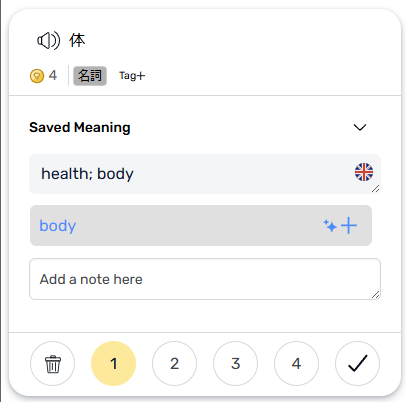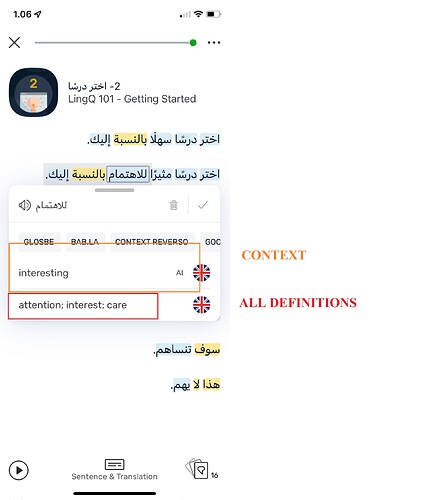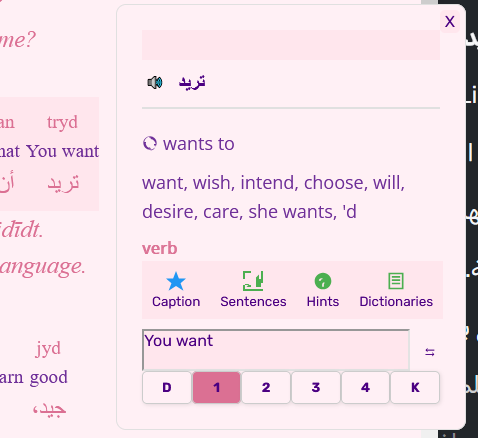Sorry for the thread title; let me explain.
The new context-based definitions are awesome! I love seeing a terse, relevant translation at the very top of the list. So many translations in Japanese include a lot of formatting noise or even the word written out as hiragana! (puts spoilers on reverse flash cards) So I’m really happy about this new feature!
However, the context-based translation is not shown any time I already have a saved LingQ. I wonder if it should be shown in those cases, too.
Here’s why:
- I see a new word with multiple meanings, choose the context-based translation for meaning A in this context, create a LingQ
- see the same word in different context, see my saved LingQ which is for the wrong context. What if I could also see the context-based translation, without clicking the “expand” button? What if it was always shown by default?
I think this would be the best way for LingQ to quickly show me what a word means, which is the whole point: to understand a word in context, as it is encountered in native materials.
Here is a real-world example of a LingQ that I created before this AI feature, which includes both definitions of a word:
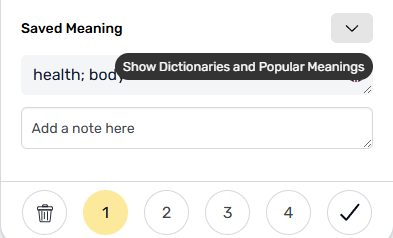
We can see that the AI helpfully clarifies which definition is used in this context, yet I had to click the expand button to see it.
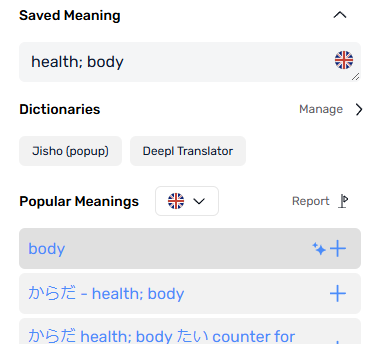
Consider an alternate history where I had created this LingQ on this lesson, choosing the AI suggestion “body.” Then, the next time I encounter it in a context where it means “health”, I would have an inaccurate LingQ. That would be fine if the AI suggestion was also shown directly beneath it, as a helpful cue to me. Then I can adjust my LingQ if I want.
I’m curious to hear if other users disagree with me or feel like I’m using the tools incorrectly, perhaps I should be creating my LingQs differently?
